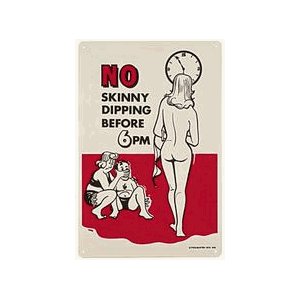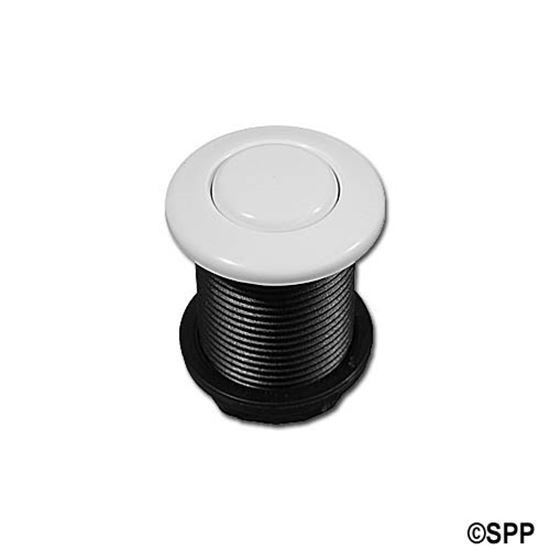-
Posts
722 -
Joined
-
Last visited
-
Days Won
32
Everything posted by Cusser
-
I've had a 1988 CalSpa since new, and I've had to adjust its pressure switch a couple of times. I've even thought about replacing that switch with a more-modern screw in type.
-
UV Bulb exchange only an expensive specialty tool?!
Cusser replied to Skippyb's topic in Portable Hot Tubs & Spas
That tool looks like an oil pressure sender socket for automotive, with a handle welded on. If such socket fits and there's no room for a ratchet wrench on top, I'd try a big Vise-Grips on the socket to loosen/tighten. Specialty tools like that shown are ridiculous !!! Some manufacturers of stuff want to reap all repair labor forever !!! -
Question about GFCI for HotSpring Jetsetter LX
Cusser replied to gwmac's topic in Portable Hot Tubs & Spas
Don't go by what I write here, but this is the way I understand things. The existing GFCI will protect you with the new spa. The existing GCFI will trip at 60 amps, Hot Springs lists a breaker that trips at 50amps. I would think that it's most likely that if one had a short that would trip at 50 amps, that will also cause a 60 amp breaker to flip. Let's let an electrician comment. For the record, my 1988 spa did NOT have a GFCI breaker at all when installed new by an electrician, just a typical 40-amp breaker in the circuit box on the house. A decade later I shut off that breaker and installed a 40-amp GFCI breaker inside the spa cabinet myself. So swapping to a different-amp breaker is not that difficult, just know how to shut off the power completely, and to check and re-check that with your multimeter in VAC mode. -
How level does a tub have to be, really.
Cusser replied to Skippyb's topic in Portable Hot Tubs & Spas
In 1988, we had our new 7-foot CalSpa put onto our 8-foot wide concrete patio. I never gave it a second thought, but we likely told the spa dealer that it was going on our patio, so we all just assumed it was level. It's still working. -
When I had my CalSpa delivered (late 1988), the two doors covering the equipment recess were mis-aligned, believe that happened on delivery, as the spa was on its side to get it through my gate. Since it was new, I requested that to be repaired, and a guy was sent out, and he fixed it. Three weeks later, that guy sent a bill to me, saying the dealer stiffed him and asked for ME to cover the costs. Well, this guy could hardly write, and I saw that the bill included 1 full gallon of wood glue, stuff like that. I said not my problem, dealer owes you, never heard from him again. I still have that '88 CalSpa.
-
Maybe the poster's issue is that it would be more expensive to run a 230 VAC circuit to the indoor tub than a dedicated 110 VAC line.
-
I've had nice success on my '88 CalSpa with liquid leak sealer. I'm also unable to pinpoint the leak, and one side is 100% inaccessible.
-
I was also thinking pressure switch-related issue as stated above. Sorry, could not make the video NOT show.
-
Post the price for a brand new 14x7 maxx spa. I figure like buying a pre-owned vehicle: I buy vehicles like 6 years old for 40% of the original price. Obviously, pay much lower if that used spa is not 100% operational before you purchase it. And be sure to get quotes in advance for moving it to your location, new electrical hook-up, etc. In Arizona, seems like every week someone is trying to give a spa away on Craigslist.
-
I have a couple of cracks on my 1988 CalSpa, smaller than what you show in your photo. I tried epoxy a decade ago, didn't hold up over time due to 100% soaking in water, so I have purchased some "marine epoxy" to try next time I have it drained and dry. I do have a small leak "somewhere" (not in the equipment side), but have been unable to pinpoint where, and one side is 8" from my home block. So I use leak seal liquid like once or twice a year, and the stuff DOES work !!!
-
What's the tub voltage? Do you have a cover? Is this tub new or new to you, and did it ever heat up OK and something just went wrong?
-
I've used a floater and 1" bromine tablets in my spa since 1988. When your spa reaches that age, drop me a note.
-
Tub placement, distance from house and crawl space
Cusser replied to Kylejesh1977's topic in Portable Hot Tubs & Spas
Had my spa installed on my patio back in 1988. So one side sits about 10" from the block wall. Yes, not accessible, but the other non-equipment sides are not designed to be opened up either. And with sprayed-in foam insulation, good luck pinpointing any internal leak anyway if not in the equipment area. -
I should add that my 1988 CalSpa required and uses a 40-amp 240 VAC circuit, for a 7-foot, approximately 350 gallon unit. I believe that many newer spas use 50-amp or 60-amp circuits for similar sizes/water volumes. To me, that somewhat indicates that newer spas might require more heat to reach and maintain 104F temperatures, maybe in the past 3 decades there's been less insulation added as cost-savings, out of sight strategy.... A good quality cover will also retain more heat.
-
Yes, amount and type of insulation is very important. When Mrs. Cusser and I had a bathtub installed into our home, we asked for additional insulation to be added around it before the "pony" walls were built, and it does help keep the heat in. Because we have the exact same bathtub in our place up north (was installed before we bought the place).
-
How Do I Get Rid Of Soap Bubbles In Spa?
Cusser replied to Soonerdal's topic in Portable Hot Tubs & Spas
Might be easier and cheaper to drain and refill the spa. -
I'm in Arizona, and at this time of year our high temperatures are 65-70F, and gets down to 40F at night. I have a 1988 CalSpa, set to operate only when water temperature drops, and needs to pump/heat to get back to 104F. My spa actually runs less than 1/2 hour per day for that, so my costs are low, figure under $15 a month for electricity and chemicals.
-
Override 104' High Limit Hot Tub Is Luke Warm
Cusser replied to J.J.'s topic in Portable Hot Tubs & Spas
What about fiber washers, unless you spa temperature sender needs stainless steel washers to make a grounding connection??? On my 1988 CalSpa, I don't have such issue, as my heat control is simply a rotating dial, no readout of degrees either, I use a floating thermometer. On mine, the heat sensor slips into a stainless steel tube, and I image that moving that farther away from the heater housing would make it "think"that the temperature is low and would signal to heat. -
Test Strips - Will TOTAL Chlorine also test TOTAL BROMINE?
Cusser replied to mscdman's topic in Portable Hot Tubs & Spas
The test strips will work. The readings will be a little different though. I can't remember the conversion, some here will know, or see Google. -
First of all, let me state that I E-mailed CalSpa directly about this, but they didn't respond within the "2 working days" promise. Anyway, one of my three air buttons broke the other night, and I cannot blame Mrs. Cusser. Also, currently my "air bubbler" (the 3rd button on the right) is not operating anymore, but we rarely use that function. Picture 2 shows the broken button. Picture 3 is looking down the recess to show a rubber diaphragm of some type. An online parts place recommended a button (picture 7) https://spacare.com/LenGordon15ClassicAirButtonWhite.aspx but no information whether that rubber diaphragm must come out (how?) and what's underneath it. In the meantime, I drilled a small hole in the top button of my #3 button, threaded in a screw, and pulled the switch up and out; then I swapped that over to the #1 "jet" position, and that works. I also built up and glued the broken button and inserted that into the #3 bubbler hole, but that still doesn't operate. So just where is the "switch" part of the bubbler located? Under the rubber diaphragm? Does a replacement button come with a new rubber diaphragm, and are those essentially "universal"? If the switch is under that diaphragm, does the switch come out readily for testing? Sorry for all the questions, but I just cannot find appropriate information so calling on the experience of members here, Thanks.
-
Never, ever tell any prospective guest tubbers about this. Take that information to your grave.....
-
-
HELP! Broke PVC pipe into back of jet
Cusser replied to Jacksonstate13's topic in Portable Hot Tubs & Spas
Looks like the pipe broke off in a PVC glue-type union. There are videos on how to remove such fittings on YouTube using a heat gun.






